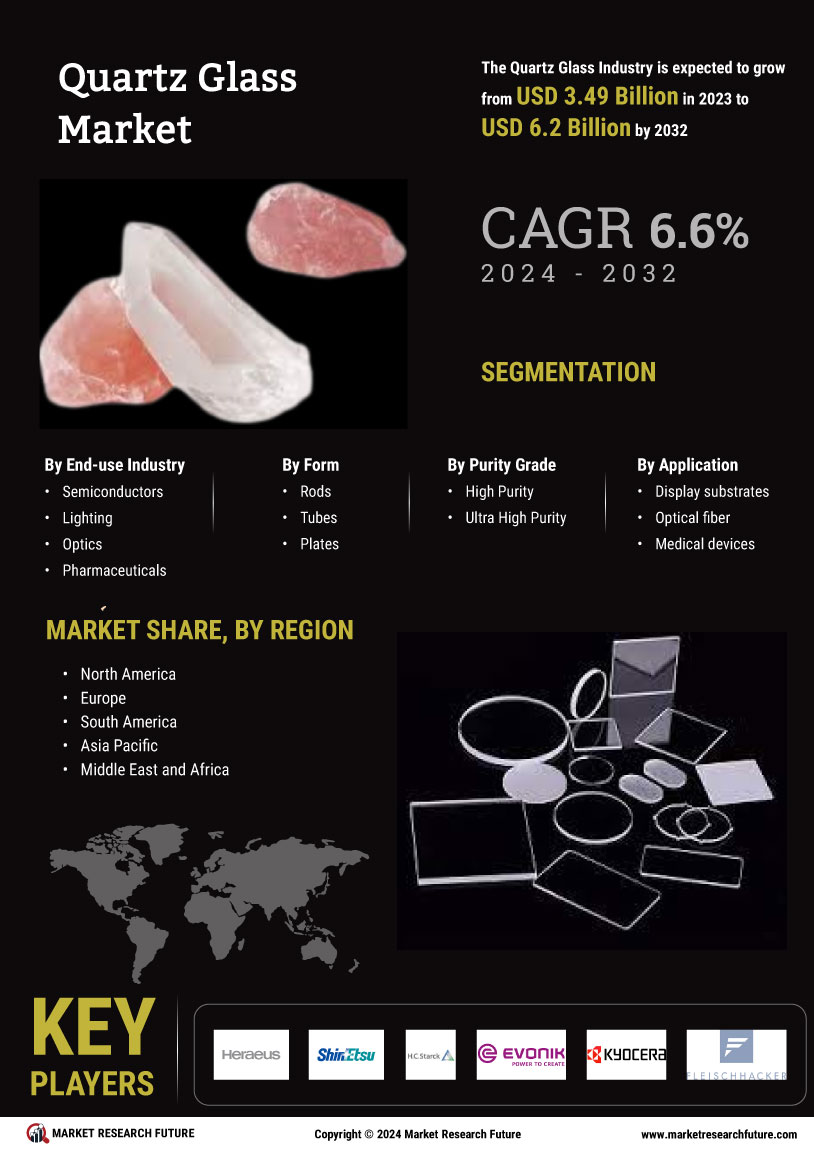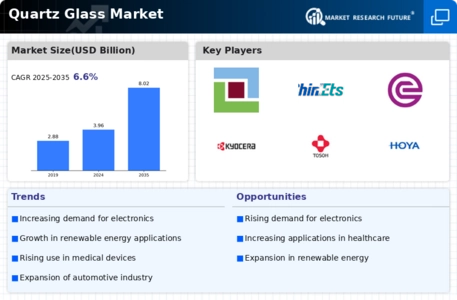In April 2024, Heraeus Holding, one of the major players in the market, revealed that it has begun expanding its production facilities in order to satisfy the increasing demand for high-quality quartz glass applied in semiconductors and optics. As a result, this will deepen the international presence of the company while Switching and enjoys increasing demand from the Asia-Pacific region, particularly between semiconductor makers in China and Japan.
Other factors are also affecting the market including collaborations and expansion. In May 2024, Momentive Performance Materials Inc. entered into a contract with one of the top companies in the aerospace industry to produce high temperature resistant Quartz glass. It is anticipated that this partnership would lead to growth for both industries through Momentive’s advances in producing durable and high temperature resistant quartz goods.
Sibelco makes further steps to grow its global presence through strategic cooperations that enhance production effectiveness and extend its raw materials sourcing chain. In March 2024, Sibelco entered into a partnership with a top-end Asian supplier of quartz to be able to increase quartz glass sales targeting automotive and energy industries in particular.
The Quartz Corporation during the beginning of 2024 was also in the new headlines courtesy of new partnership where it collaborated with a US clean energy firm to provide them with quartz glass to facilitate their next generation of solar panels. This partnership is meant to leverage their bundled capabilities in energy efficient technologies thus creating a further need for quality quartz glass in the renewable energy industry.
Jiangsu Pacific Quartz Co. Ltd has been concentrating on strengthening their R&D through partnerships with top research centres in Europe. Their partnership which began in May 2024 is focused to create innovations in quartz materials for high end use in the areas of optical and communication technologies.



















Leave a Comment